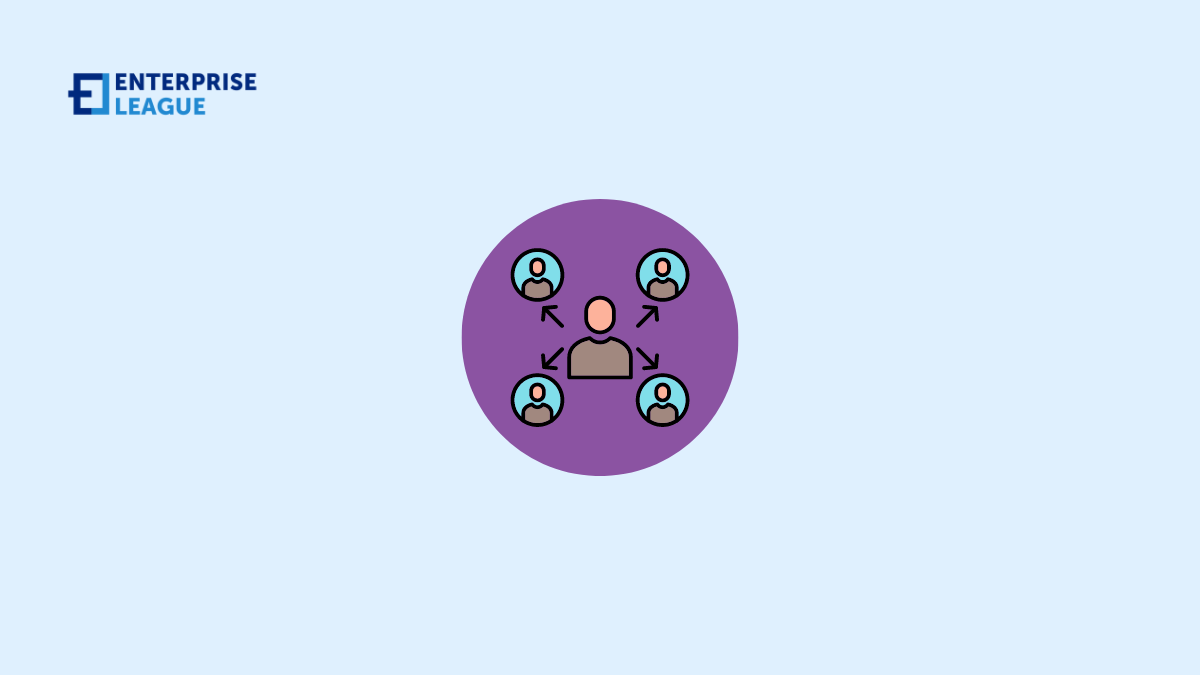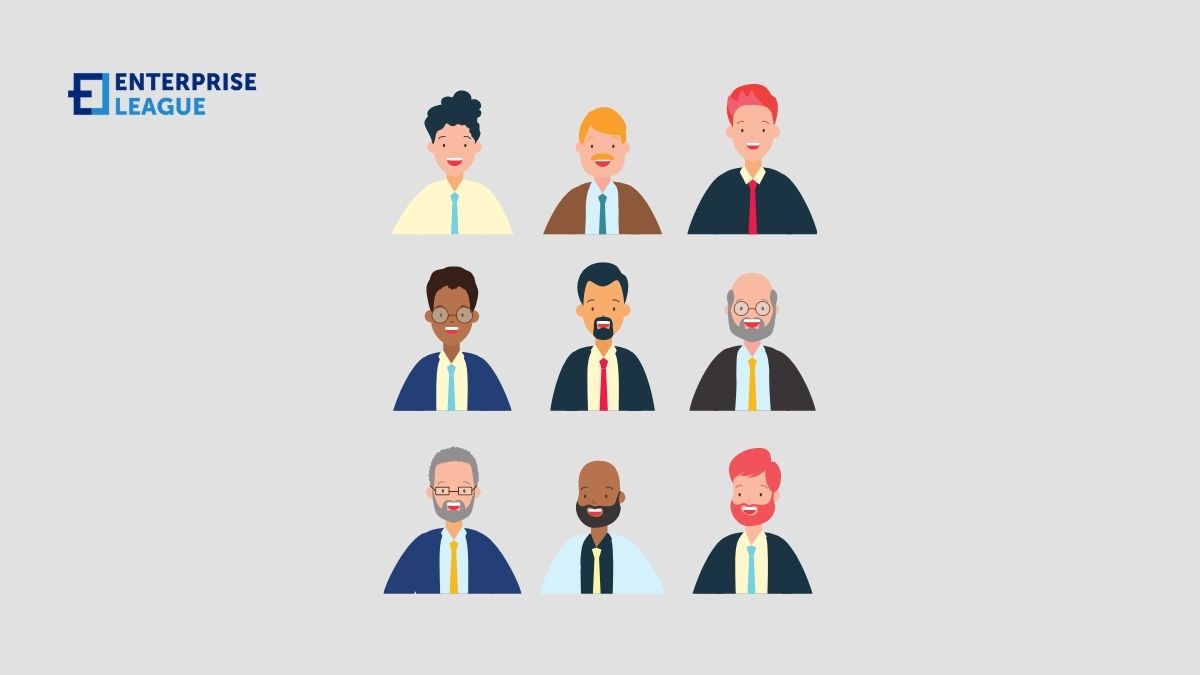Excavators are essential on construction sites, especially for digging, grading, lifting, and demolition work. But the same power that makes them indispensable also makes them dangerous. When an excavator strikes a worker, rolls over, or malfunctions, the injuries are...

Top 16 entertainment business ideas (2025)
Whether is television, telecommunications, music, video games, or live concerts, we have to admit that without the entertainment industry, our everyday lives wouldn’t be as colorful and enjoyable as they are today. It is an industry that has been in constant growth from the very beginning which leads researchers to believe that it will reach over US$61.74 billion by 2029. With a market size like this, plenty of entertainment business ideas are waiting to be discovered and turned into a profitable business.
Top 16 entertainment ideas
Here are some creative and profitable entertaining business ideas that you can start right away:
Online wedding marketplace
An online wedding marketplace is a digital platform that connects engaged couples to quality local wedding vendors like planners, venues, caterers, and more on one website. Instead of endlessly searching separate vendor listings online and offline, the marketplace aggregates options by region to simplify booking everything needed from stag parties to photography. For couples overwhelmed with planning intricate events, it provides inspiration, price transparency, and ease in assembling their full vision conveniently.
Vendors also benefit by reaching more qualified leads specifically seeking their services. The centralized dashboard allows seamless coordination between the couple and all suppliers on guest counts, schedules, menus, and more. As weddings blend more personalized flair with hosted technology for guest experiences, the digital marketplace helps make customized magic happen without exhaustive effort.
How much you can make: $100K – $1M annually
How much does it cost to start: $50K – $200K
How long does it take to build: 6-12 months
Birthday party or event venue
A birthday party or event venue is an event-hosting site tailored to celebrating special gatherings like birthdays, reunions, and graduations. Instead of juggling tableware and cleaning the house before and after welcoming guests, customers book all-inclusive venues providing flexible rooms for varying sizes. The on-site coordinator handles details from decorations matching chosen color themes to arranging welcome setup, food catering, and equipment needs that require more than simply renting foldable tables and chairs alone.
Venue options may mix components ranging from high-capacity halls for quinceañeras to outdoor garden spaces offering a relaxed sense of magic, wonder, and community connection through milestone life moments. Not having to deal with cooking, entertainment, parking, and other scenarios facilitates customers showing up ready to focus on bonding.
How much you can make: $50K – $500K annually
How much does it cost to start: $20K – $100K
How long does it take to build: 3-6 months
Indoor playground or soft play
An indoor playground or soft play is an indoor recreation center for children featuring equipment like slides, tunnels, and ball pits using padded floors and soft structural materials for safety. This provides kids a fun space for energetic play during bad weather plus hosting birthday parties conveniently year-round. For parents, built-in supervision brings reliable child entertainment without messy cleanup at home. Centered on imagination, exercise, and social growth needs vital for early development, such centers nurture healthy engagement versus solitary digital activities.
The welcoming parents-included environment also fosters family bonding and community connections as kids befriend others through play. Once a niche seen occasionally beside eateries, indoor playgrounds now anchor shopping plazas as routines decentralize from any single downtown. As society confronts rising inactivity and related illness, businesses enabling active youth recreation fill an essential role.
How much you can make: $100K – $1M annually
How much does it cost to start: $50K – $200K
How long does it take to build: 6-12 months
Laser tag arena
Laser tag arena is an indoor entertainment facility hosting laser tag games between groups of players outfitted with infrared-sensing vests and toy laser guns. Players navigate an arena maze decorated with glow objects, fog, music, and neon lights. By tagging opponents and bases to score points, laser tag builds fun physical activity and friendly competition without real-world physical consequences. As video games and streaming media keep leisure time solo-focused, laser tag gets people moving through immersive worlds together.
The exciting arena environs foster birthday parties, teen hangouts, corporate team building, and tourist adventures suitable across ages. Relative to the spatial needs of bowling alleys and trampoline parks, the compact playable area drives high hourly rotations. As families look to balance screen time with more active bonding pursuits, laser tag fills an entertainment niche fusing fitness and interactive gaming in ways that typical gym workouts lack.
How much you can make: $100K – $1M annually
How much does it cost to start: $50K – $200K
How long does it take to build: 6-12 months
Modeling agency
A modeling agency is a talent management company that represents models and connects them with clients hiring for advertising campaigns, brand promotions, fashion shows, and other projects needing professional modeling skills. For aspiring models, agencies provide crucial access and guidance for dealing with media, designers, and major consumer brands.
On the client side, companies rely on model agencies to simplify casting instead of directly recruiting. This saves expenses like holding audition events to source models that meet specialized aesthetic or talent needs per each branded shoot. Model agencies also legally safeguard both models and respective clients once hired. By bridging connections through a credible intermediary representing standout talent, brands, and models mutually benefit from amplified work opportunities that best align.
How much you can make: $100K – $1M annually
How much does it cost to start: $50K – $200K
How long does it take to build: 6-12 months
Puppet shows
Puppet shows is an entertainment business providing live puppet performances for children at community events, libraries, fairs, and private parties. Bringing imaginative shows straight to kids via transportable puppet stages ignites joy far beyond screens and digital options today. At malls, parks, or festivals, colorful costumed characters promptly transform any space into intimate theater, whether for educational skits or fantasy adventure tales.
Kids experience connection and delight seeing puppet stars come to local life alongside their own communities versus needing trips to faraway big-box entertainment venues. For parents, lively mobile distraction during errands or while they converse rewards both good behavior and imaginative curiosity. For performers, a portable puppet production focused just on show quality and transport takes theater skills into communities ripe for creative placemaking connections that lift spirits.
How much you can make: $50K – $200K annually
How much does it cost to start: $10K – $50K
How long does it take to build: 1-3 months
Circus
Circus is a traveling entertainment business that stages diverse performing events under tents or in arenas featuring talented gymnasts, acrobatics, clowns, and uniquely trained animals to captivate thrilled crowds. People have gathered for millennia to marvel at seemingly superhuman spectacles of skill and courage as a community. By concentrating many acts and personalities into a high-energy atmosphere unlike static screens, the theatrical ensemble compels new emotions, escape, and meaning.
The strategic choreography leads each audience member on their own profound journey over 90-120 minutes through gasps, laughs, and soul-stirring feats once considered impossible. While event venues host concerts or single-genre productions, the encompassing circus wonderland exists far from daily life as its own mobile universe following ancient traditions.
How much you can make: $100K – $1M annually
How much does it cost to start: $100K – $500K
How long does it take to build: 6-12 months
Music studio
A music studio is a teaching facility where musicians instruct students of all experience levels in playing instruments or singing. Lessons nurture artistic talent spanning from hobbyists seeking recreational creative outlets to artists pursuing careers industry-wide. The studio provides acoustic spaces, various instrument rentals, and energetic guidance to help community members unlock their potential. For eager students, structured sessions build skills faster under watchful ears versus self-teaching through books or videos alone.
Studios also foster supportive communities for those sharing passions. As performing arts enrichment opportunities keep declining at many public schools, specialty studios fill a crucial role in keeping musical arts accessible despite strained education budgets over the years. With the right location and marketable instructors, operating studios keep surrounding live performance ecosystems thriving by continually cultivating new generations of talent.
How much you can make: $100K – $1M annually
How much does it cost to start: $50K – $200K
How long does it take to build: 6-12 months
Water park
Water park is an amusement park providing water-based rides, pools, and attractions for all-ages family entertainment. As heatwaves intensify and families prioritize shared experiences, outdoor action parks fill rising recreation demand versus more passive indoor entertainment options alone. Water slides, splash areas, lazy rivers, and surf simulators promise summer fun as miniature golf did for earlier park generations.
For operators, synergies of clustered amenities and the seasonal climate focus keep overhead costs favorable compared to elaborate year-round theme parks, especially in warm regions rich with tourists. Locals benefit through affordable memberships offering all-week relaxation without lengthy travel. Carefully zoned, water parks boost local hospitality ecosystems from hotels to eateries as visitors plan vacations around full-day enjoyment.
How much you can make: $1M – $10M annually
How much does it cost to start: $500K – $5M
How long does it take to build: 1-2 years
Costume designer
Costume designer is a clothing design service specializing in unique costumes for rental by schools, theaters, theme parties, and events. Drawing on specialized fashion training and sewing expertise, it creates one-of-a-kind looks that support performers in bringing stories to life. For venue managers and event planners with tight budgets, renting finished costumes versus building in-house fills a major gap in responsibly outfitting productions.
Renters access elaborate period dresses, animal mascot suits, and historical military uniforms with the quality of specialty design houses versus makeshift DIY attempts. Students also gain inspiration by seeing possibilities beyond basic retail looks. Relative to full Broadway-grade costuming, community theaters, dance academies, and other creative groups in modest locales gain affordable access to transformative magic.
How much you can make: $50K – $200K annually
How much does it cost to start: $10K – $50K
How long does it take to build: 1-3 months
Trampoline park
Trampoline park is an indoor recreational facility with interconnected trampolines forming Courts for open jump sessions along with dedicated trampoline sports areas. Patrons purchase time slots to actively bounce, play dodgeball games or practice gymnastics flips over padded pits in safer ways than attempting tricks alone at home. For reliable exercise more engaging than walking or running alone, families, teams, and individuals find motivating fun while progressing skills together at any level.
Dedicated courts also foster rising competitive community participation in trampoline dodgeball leagues and acrobatic disciplines as formal sporting outlets. As urbanization reduces access to spacious active play areas, trampoline gyms deliver efficient high-energy activities concentrated intentionally in one covered, customizable arena. With the positive social influences of group encouragement versus solitary digital entertainment, bouncing blends recreation and sport to nurture community bonds through uplifting group motion.
How much you can make: $100K – $1M annually
How much does it cost to start: $100K – $500K
How long does it take to build: 6-12 months
Bowling alley
The bowling alley is an entertainment facility with multiple bowling lanes where groups and families can play bowling games and enjoy complimentary food and drinks. As bowling remains popular across ages as an accessible group activity, additional offerings beyond the lanes add value and enhance customer experiences through integrated fun. An on-site lounge, arcade, and appealing menu augment the alley’s intrinsic sport with appealing amenities fitting the wide range of casual patrons bowling attracts versus strenuous athletic associations alone.
Whether for young birthday parties, team hangs, or elder socials, glowing lanes aptly unite people through available, stress-free recreation better than most bar or dine-out options standing alone. Operators can also smartly maximize site uses during daytime downtime with meeting or event rentals featuring on-demand games and cuisine built-in.
How much you can make: $100K – $1M annually
How much does it cost to start: $100K – $500K
How long does it take to build: 6-12 months
Publicist
Publicist is a PR service that helps individuals and brands build and manage their public image. By securing media opportunities and advising on messaging, a publicist amplifies the positive visibility of people and companies through targeted outreach and strong connections. For personal clients like authors or experts, an adept publicist lands profiles in major outlets that lend credibility and grow audience reach. For brands, public relations shapes wider perception and trust especially during new launches or reputational challenges.
An experienced strategist also coaches clients on seamlessly aligning public actions to stated values. As information flows rapidly across digital channels today, public opinion and online commentary around organizations continue intensifying. Navigating public reception channels calls for nuanced guidance that publicists provide through ethical relationship-building versus superficial hype alone.
How much you can make: $50K – $500K annually
How much does it cost to start: $10K – $50K
How long does it take to build: 3-6 months
Entertainment blogging
Entertainment blogging is an online media site, typically run by an individual, that posts commentary, news, and recommendations focused on movies, TV, celebrity culture, and other aspects of the entertainment industry. By covering pop culture passions via blogs versus formal journalism, it speaks to fans in more casual voices on topics from awards show fashion to fantasy series theories. Readers benefit from visiting blogs for timely pop culture commentary in relatable tones.
For writers, focusing commentary into niche blog channels promotes community around specific programs and facets of the arts versus broad general interest sites. The blogger builds a loyal readership by consistently delighting fans. Nimble passion project blogs satisfy the rising demand for entertainment insights from real people versus official studio publicity alone. As streaming further decentralizes content experiences, niche blogs immerse fans by sustaining bonds around beloved shows and stars.
How much you can make: $50K – $200K annually
How much does it cost to start: $5K – $20K
How long does it take to build: 1-3 months
Balloon bouquet
Balloon bouquet is a retail and delivery service that creates beautiful decorative arrangements of helium balloons for special occasions or gifts. Customers can choose balloon types, sizes, ribbons, and fillers to match recipient interests or celebration themes without needing floral design expertise. For hurried families or corporate offices, it handles events without trips to multiple party stores or messy home assemblies.
The cheerful balloons lend playful, uplifting energy to any space in unique ways fresh flowers cannot. For operators, lightweight items shipped in bulk keep material costs and spoilage low compared to florists. Helium tanks enable on-site inflation for bouquets ready upon customer pickup versus pre-making every arrangement.
How much you can make: $50K – $200K annually
How much does it cost to start: $10K – $50K
How long does it take to build: 1-3 months
Bounce house
Bounce house is an inflatable playground rental service, that provides large air-filled structures like slides, obstacle courses, and jousting arenas for children’s parties and events. Customers benefit by having exciting entertainment come directly to their location instead of needing to build activities from scratch or reserve multiple rides. With tailored themes from princess castles to sports arenas, it transforms any backyard or venue into an immersive playland instantly. Property owners including schools and churches generate additional income too by hosting the visiting attractions through rental partnerships.
As parents increasingly seek memorable kids’ party options beyond food alone, bounce houses supply active entertainment that stands out. And as real estate plots continue subdividing where dedicated play areas get rare, inflatable venues delivered site bring communities together through participating in shared space adventures.
How much you can make: $50K – $200K annually
How much does it cost to start: $10K – $50K
How long does it take to build: 1-3 months
Conclusion
Remember, if you want to succeed, you should leverage technology, understand your audience, prioritize quality, be adaptable, and build a community. By following these guidelines, you can increase your chances of success in this competitive and exciting field. Before you go take a look at these entertainment startups that were someone’s idea once.
More must-read stories from Enterprise League:
- Profitable seasonal business ideas with profit potential.
- Business ideas for software engineer you should consider.
- Part-time business ideas you should consider starting.
- Smart event planner business ideas to boost your entrepreneurial mind.
- Resale business ideas to start earning profit and start your own business.
Related Articles
Excavator Injuries: How Workers’ Comp Impacts Small Construction Firms
The ROI of 3D Visualization in Real Estate Marketing
Real estate marketing has fundamentally changed over the past five years. The industry that once relied on printed brochures, static photographs, and open house tours now operates in an increasingly digital environment where visual presentation directly impacts sales...
How To Choose the Right Tool for Waterfall Chart Reporting
Clear waterfall charts help teams explain how results change over time. This guide compares Excel, Google Sheets, and Power BI, then looks at add-ins such as Zebra BI and think-cell for advanced financial reporting. You will see where each option fits, from quick...
Sponsoring Employees for Green Cards: Small Business Considerations
For many small businesses, sponsoring a foreign employee for a green card can be a strategic investment. As industries grow more competitive, retaining skilled workers becomes increasingly important. Green card sponsorship offers long-term stability for both employer...
Excavator Injuries: How Workers’ Comp Impacts Small Construction Firms
Excavators are essential on construction sites, especially for digging, grading, lifting, and demolition work. But the same power that makes them indispensable also makes them dangerous. When an excavator strikes a worker, rolls over, or malfunctions, the injuries are...
















